We’ve been playing with different ways to retrofit the house on the farm with cooling systems that do not cost the earth (literally).
Given the era the house was built in and the materials it’s made of, heating and cooling are pretty much a bit of a disaster. Summer, particularly gives us grief. When we bought it, it had fully ducted aircon, which we hated. Luckily for us, the weather gods stepped in and removed the system with a well placed lightning strike.
So, over the winter we played with ideas for alternatives and decided to go with this, from Bill Mollison’s permaculture designer’s manual: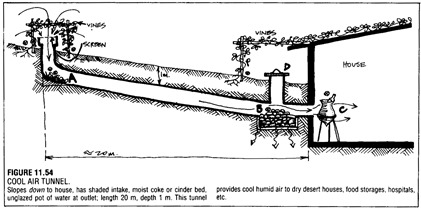
Clearly this comes from a desert environment and our humid heat will need different strategies, but the principle should work the same.
We went with flexible corrugated ag pipe, buried 2 metres below ground, with around 50 metres of pipe run down to the house. 160mm pipe was the only affordable item, so we went with four pipes, to maximise surface area for heat exchange, as per the following: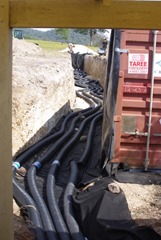
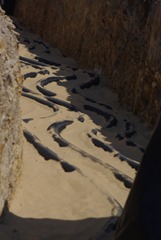
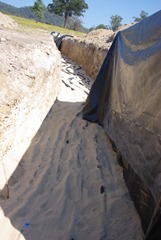
The pipes wiggle side to side to try to encourage mixing of the air and hence, increase heat transfer to the earth.
The pipes go into the house as close to the middle as we could manage: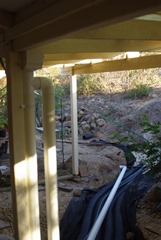
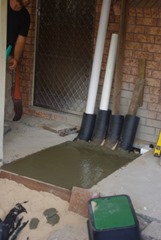
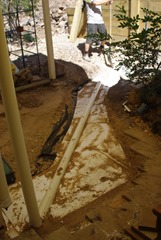
Because the last 7 metres of the pipe is only just below ground level, we installed high density foam insulation over the pipe to help reduce heat transfer here. Ideally, we probably should not have used corrugated pipe for this section.
The air from the pipes is transferred into the house via a cob plenum chamber:
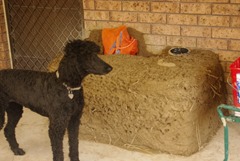
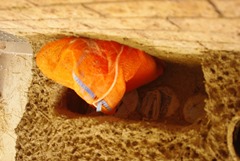
You can see the pipe ends in the right hand picture. The orange bag is stopping unwanted critters from entering the bathroom (although a baby red-bellied black snake did make it in at this time, it didn’t survive the experience – while we love these critters, poisonous snakes are just not welcome in the house. Better than a brown, though, I suppose…).
The air intake is a pretty funky cob structure, with a recycled steel roof and a solar panel that drive four computer fans that pressurise the system, to reduce the likelihood of water ingress:
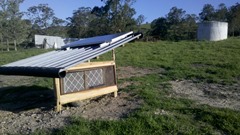
The inlet faces northwest, the direction from which our most awful hot winds originate. Hopefully this will help the fans on those ridiculously hot days.
In the house, the air is routed through the bathroom and into the middle of the house. We still need to do some work to make these bits look nice:
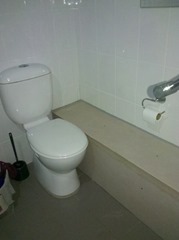
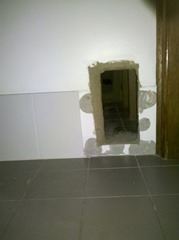
On the hottest day we’ve had so far (~38°C), the air was coming in at 19°C). Nice…
Special thanks to Will and Kenney from Integrated Bio-Tecture for helping us to make this happen.

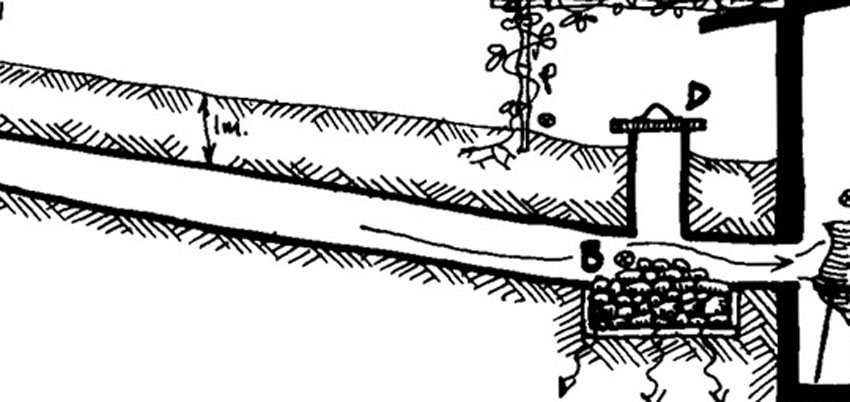
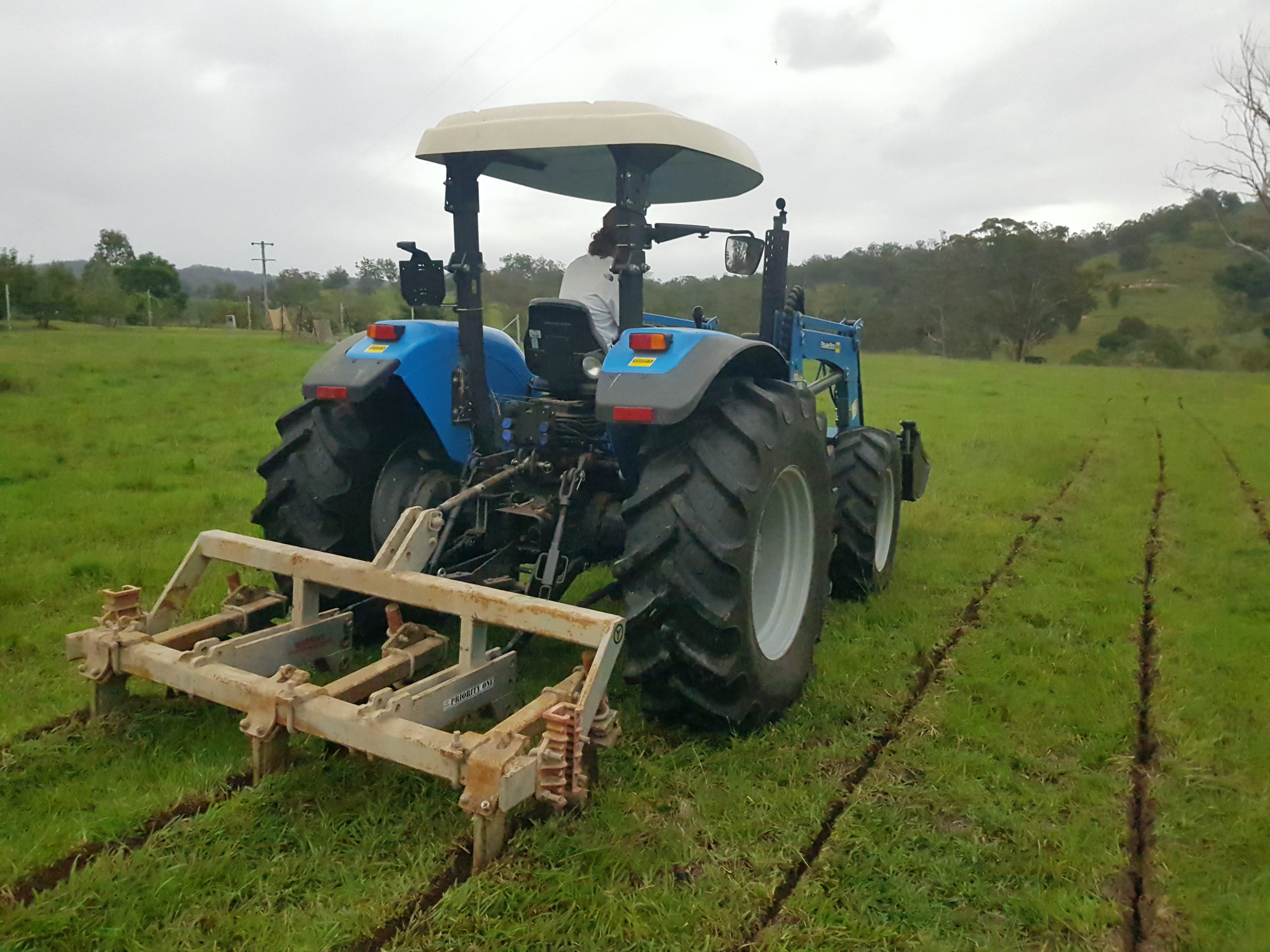
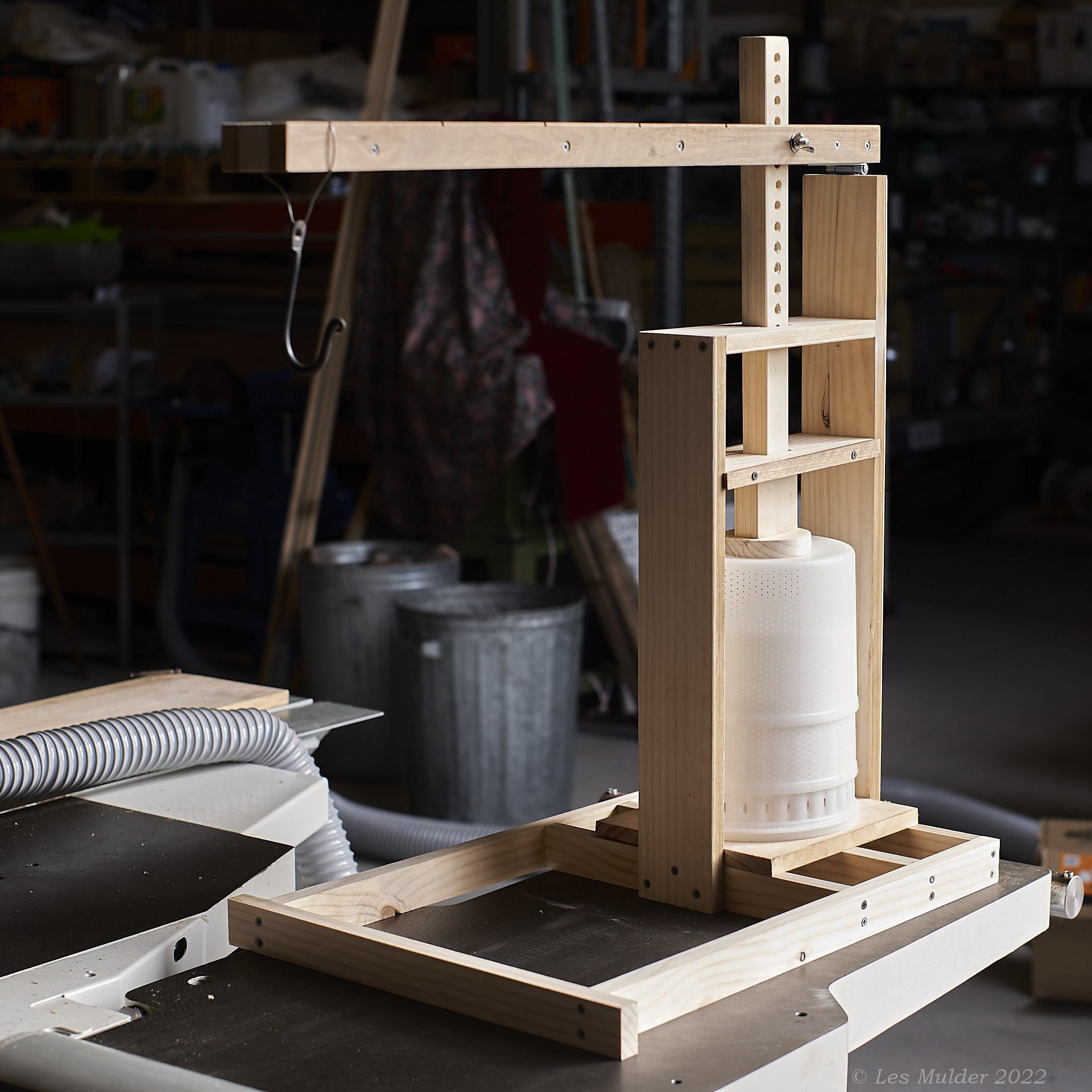
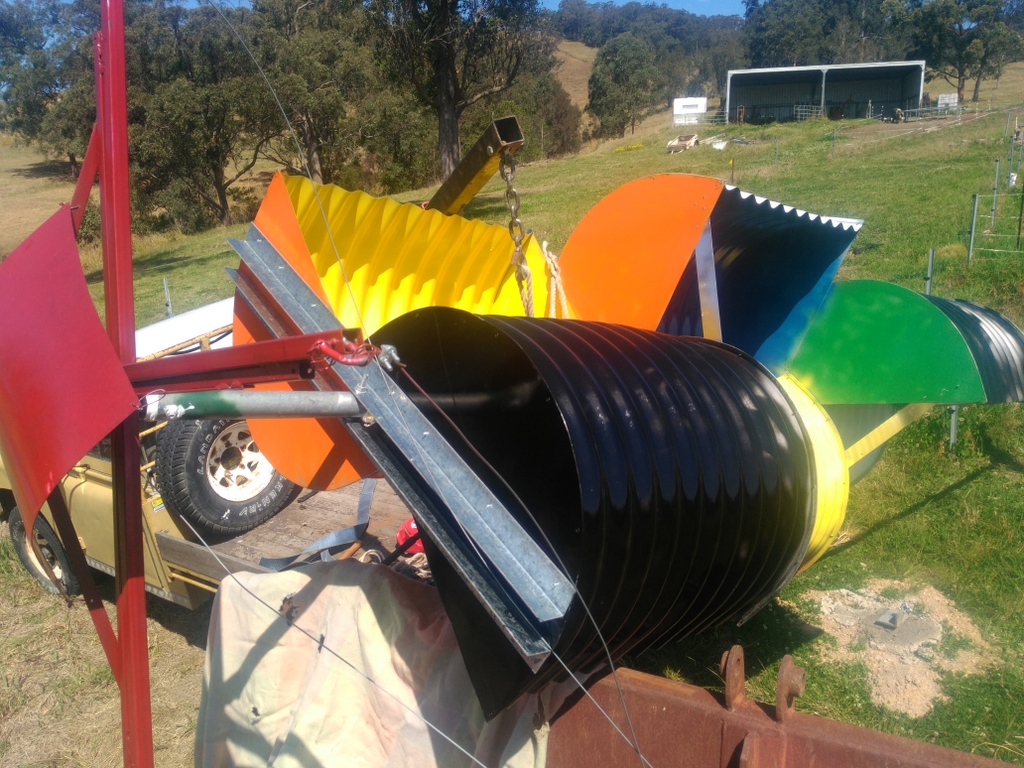
Hi,
Very interesting your cooling system. I´m planning something similar, also in a hot (and humid) climate in Southern Brazil. Question: How do you avoid mold build-up inside the hoses? How do you clean them, if at all? How did you determine the adequate diameter and quantity of hoses?
Your help is very much appreciated. Regards,
Felix
Hi Felix,
Hmm, yes, mould prevention – a detail missing from the description…
the system is designed to allow moisture to run out the bottom of the pipes, first, at the bottom of the intakes, where any moisture that condenses as it goes down to the pipe at the bottom just drops out into a gravel trap at the very bottom of the intake pipe (it’s fully open at the bottom of the vertical section).
There is also a series of small holes all the way along the bottom of the pipe. A circular saw was used to remove a 2mm deep section of the pipe all the way along the bottom – just deep enough to make a hole in the bottom of each corrugation, without slitting the pipe all the way through. These holes allow any moisture that didn’t drop out in the vertical section to drop out of the pipe along the way.
There is no provision for cleaning.
Pipe diameter was based on affordability more than anything else. We would have preferred one or two larger pipes with walls that transfer heat better than plastic does, but this was way too expensive.
Finally to answer the question you didn’t ask, but probably should have, “does it really work for your house?”
Only marginally. Our house is too big, has too many windows and leaks too much air for it to be truly effective. If your house is small, well insulated and sealed against the entry of hot air from outside, it’ll work great. I’m in the process of replacing some windows with mass walls to improve the house in hot weather, but I suspect I’m pushing poo uphill with a pointy stick…
Cheers,
Les